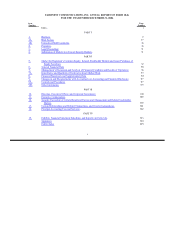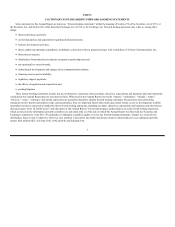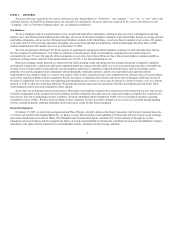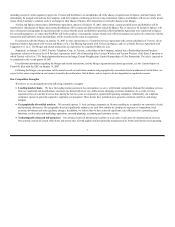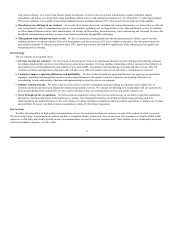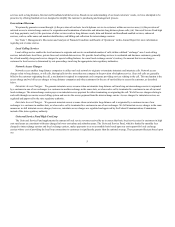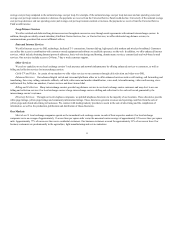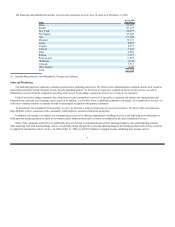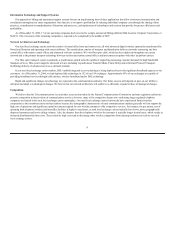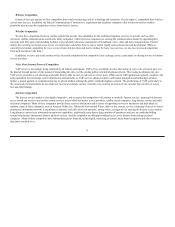FairPoint Communications 2006 Annual Report Download - page 12
Download and view the complete annual report
Please find page 12 of the 2006 FairPoint Communications annual report below. You can navigate through the pages in the report by either clicking on the pages listed below, or by using the keyword search tool below to find specific information within the annual report.
Long Distance Competition
The long distance communications market is highly competitive. Competition in the long distance business is based primarily on price, although service
bundling, branding, customer service, billing service and quality play a role in customers’ choices.
Other Competition
Although we currently believe we offer the only comprehensive suite of communications services in our markets, existing service providers such as
wireline, wireless, cable and utility companies could form, and in some cases are in the process of forming, strategic alliances to offer bundled services in our
markets. We may face increased competition from such bundled service providers in the future.
As of December 31, 2006, we employed a total of 952 employees. 127 employees of our local exchange companies are represented by four unions. We
believe the state of our relationship with our union and non-union employees is generally good. Within our company, 109 employees are employed at our
corporate offices and 843 employees are employed at our local exchange companies.
We believe we have the trademarks, trade names and licenses that are necessary for the operation of our business as we currently conduct it. We do not
consider our trademarks, trade names or licenses to be material to the operation of our business.
The following summary does not describe all present and proposed federal, state and local legislation and regulations affecting the communications
industry. Some legislation and regulations are currently the subject of judicial proceedings, legislative hearings and administrative proposals which could
change the manner in which this industry operates. Neither the outcome of any of these developments, nor their potential impact on us, can be predicted at this
time. Regulation can change rapidly in the communications industry, and such changes may have an adverse effect on us in the future. See “Item 7.
Management’s Discussion and Analysis of Financial Condition and Results of Operations—Risk Factors—Risks Related to our Regulatory Environment” in
this Annual Report.
Our regulated communications services are subject to extensive federal, state and local regulation. We hold various regulatory authorizations for our
service offerings. At the federal level, the Federal Communications Commission generally exercises jurisdiction over all facilities and services of
communications common carriers, such as us, to the extent those facilities are used to provide, originate, or terminate interstate or international
communications. State regulatory commissions generally exercise jurisdiction over such facilities and services to the extent those facilities are used to provide,
originate or terminate intrastate communications. In addition, pursuant to the Telecommunications Act, state and federal regulators share responsibility for
implementing and enforcing the domestic pro-competitive policies introduced by that legislation. In particular, state regulatory agencies have substantial
oversight over the provision by incumbent telephone companies of interconnection and non-discriminatory network access to competitive communications
providers. Local governments often regulate the public rights-of-way necessary to install and operate networks, and may require communications services
providers to obtain licenses or franchises regulating their use of public rights-of-way. Additionally, municipalities and other local government agencies may
regulate limited aspects of our business, including our use of public rights-of-way, and by requiring us to obtain construction permits and abide by building
codes.
10


